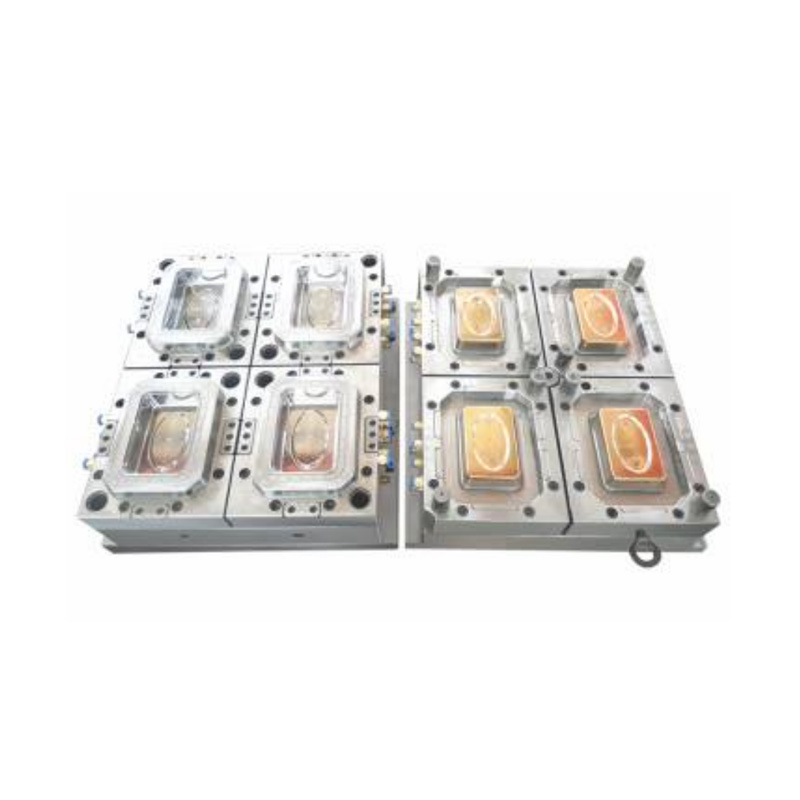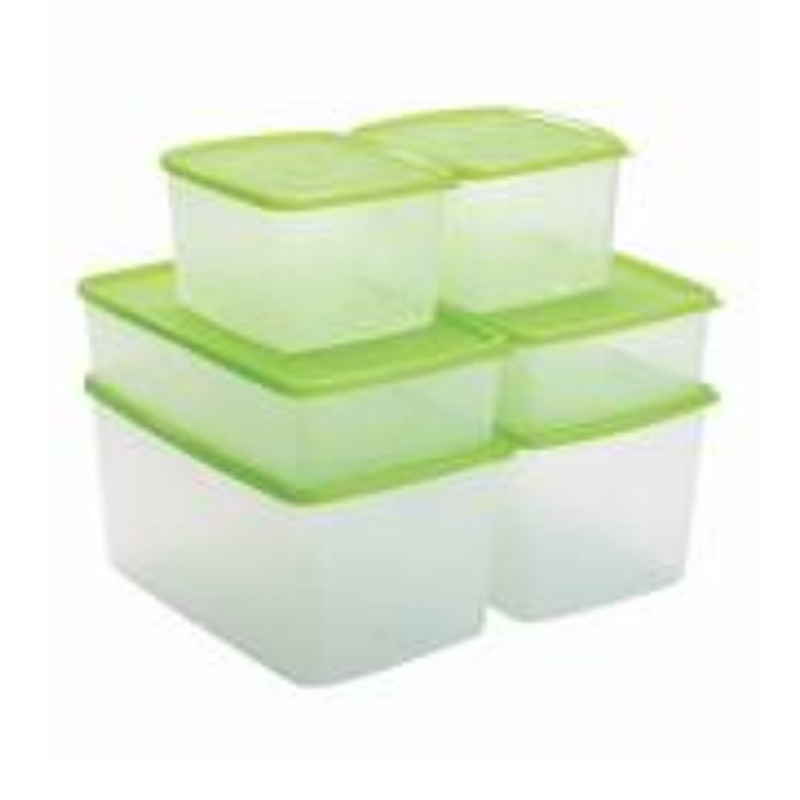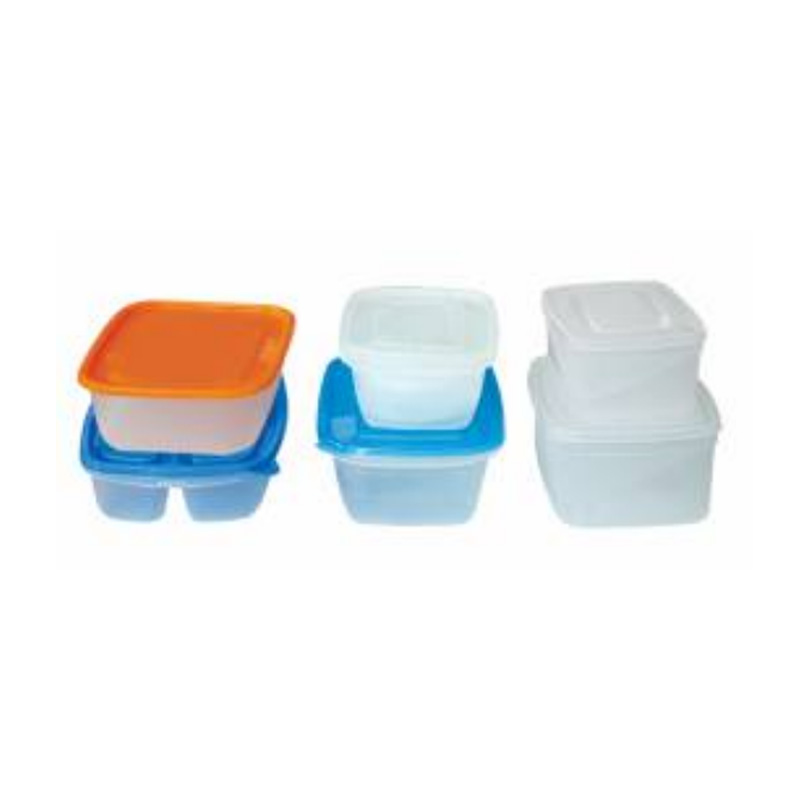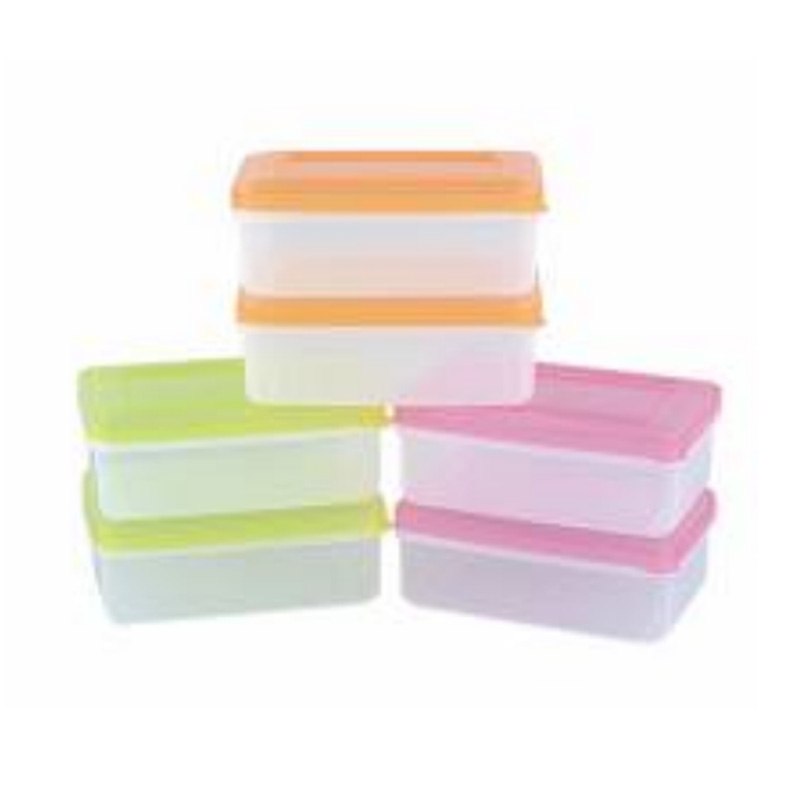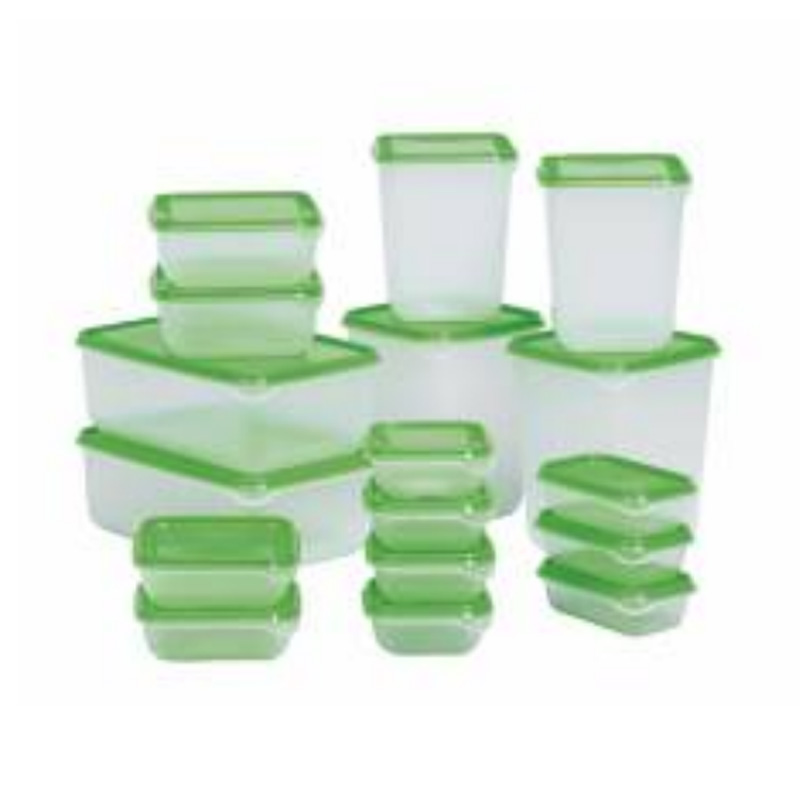1. What distinguishes a thin-wall injection mold for lunch boxes from a conventional mold?
Thin-wall molding is a specialized technique aimed at producing plastic parts (such as food containers or lunch boxes) with very thin wall sections (often less than 1 mm). Key distinctions include:
-
- Faster cycle times: Because thinner walls cool faster, the mold can cycle much quicker (often 4–8 seconds, depending on geometry and machine).
- High injection speed & pressure: Thin walls require molten plastic to fill the cavity rapidly before solidification, so the mold and machine must support high injection rates and pressures.
- Optimized gate and runner design: The gating system must avoid premature cooling or flow hesitation (frozen gates), so hot runners or valve gates are often used.
- High precision / tight tolerances: Thin walls have less margin for error; slight deviations in mold dimensions or cooling can lead to warpage, sinks, or short shots.
- Enhanced cooling systems: Cooling channels (often many, close to surfaces) are meticulously designed to extract heat swiftly and evenly.
- Steel selection robustness: Molds are more stressed because of higher pressures—steel must resist wear, fatigue and maintain polish over many cycles.
For example, the Square Food Container with Lid thin-wall mold aims exactly for this style of high-speed, high-precision molding for food containers with lids—thin walls, tight tolerances, fast cycling.
2. What product / market‐level factors do buyers often care about (beyond the mold itself)?
As users of lunch box molds, buyers are often interested in:
-
- Food contact compliance & safety: The molded plastics must be food-grade, stable over temperature cycles (freezer, microwave, dishwasher) and comply with FDA / EU / local food packaging standards.
- Lid sealing & tamper evidence: Many lunch boxes or food containers require tight-fit lids (snap, gasket, or tamper-evident bands). The mold design must support those features.
- Stackability / nestability: Efficient packing and storage require that boxes nest or stack well. The mold must incorporate draft and tolerances to enable that.
- Decoration & labeling: In-mold labeling (IML), overmolding, embossing, or logos are often desired. The mold must support IML or registration tolerance.
- Thermal performance: The container must withstand heating, cooling, or food temperatures (hot fill, refrigeration). Material grade and thickness minimal tolerances matter.
- Aesthetics and clarity: Many containers are transparent or semi-transparent. The mold surface finish, polishing, and gate vestige must be controlled to ensure clarity.
- Cost of goods / weight control: Buyers want containers as light as possible while retaining strength—this drives interest in thin-wall molding.
- Production throughput / yield: The mold design needs to support high uptime, minimal defect rate, and efficient cycle times.
- Spare parts & maintenance: Given high cycle stress, buyers want assurance for spare cores, inserts, repairability, and long mold life.
3. What information should the buyer supply specific to lunch box mold design that differs from a generic mold request?
In addition to typical mold data (drawings, dimensions, material, volume, machine specs), buyers should also supply:
-
- Intended temperature range and use case (e.g. microwave safe, freezer safe, hot fill, dishwasher).
- Lid interface design (snap fit geometry, tolerances, gasket or sealing surface).
- Stacking / nesting offsets (clearance, interfering features, chamfers).
- Decoration / labeling schemes (IML, silk screen, embossing) and their exact dimensions.
- Target wall thickness profiles, especially minimal thicknesses in bottoms, ribs, corners.
- Tolerances and warpage allowances (how much dimensional drift is acceptable).
- Cycle time target or throughput goal (i.e. how many containers per hour).
- Plastic resin grade (food-grade PP, PS, PET, etc.), its viscosity, melt temp, shrinkage data.
- Machine constraints (clamp tonnage, injection volume, mold opening stroke).
These additional data help the mold designer optimize the mold specifically for lunch box production rather than treating it like a generic commodity mold.
4. What shot life or maintenance concerns should clients expect?
Because thin-wall molds run under high stress conditions (high pressure, fast cycles):
-
- The mold steel must resist fatigue, wear, corrosion.
- Maintenance frequency is higher: periodic inspection, polishing, checking cooling holes, ensuring gate clearances, verifying alignment.
- Spare inserts / cores should be provided with the mold.
- Clients should monitor the mold’s performance (cycle consistency, defect rate) and plan preventative maintenance at scheduled shot intervals.
- A well-built mold with good maintenance can typically last hundreds of thousands to millions of cycles, but design and operating conditions will set the real limit.

